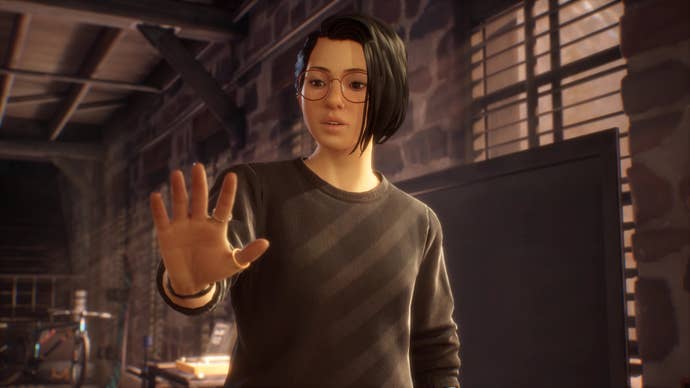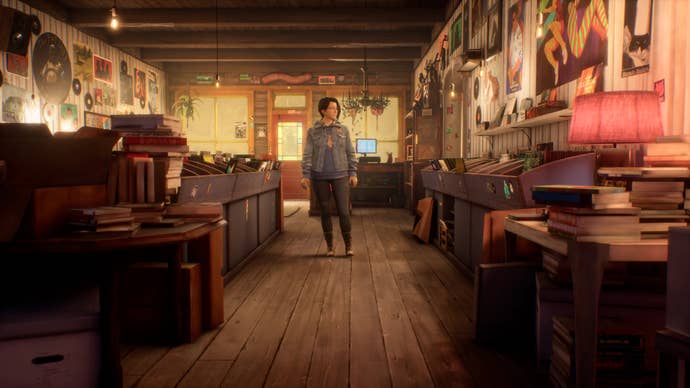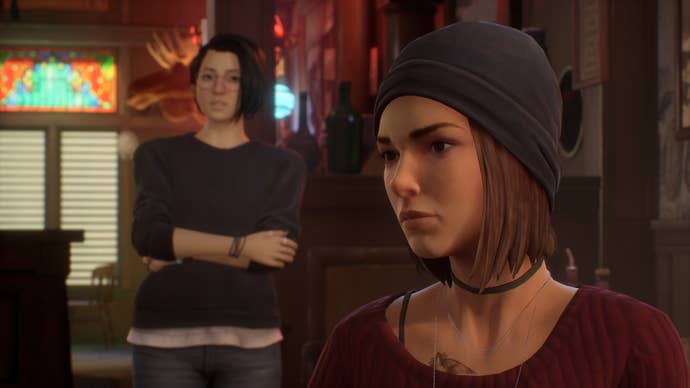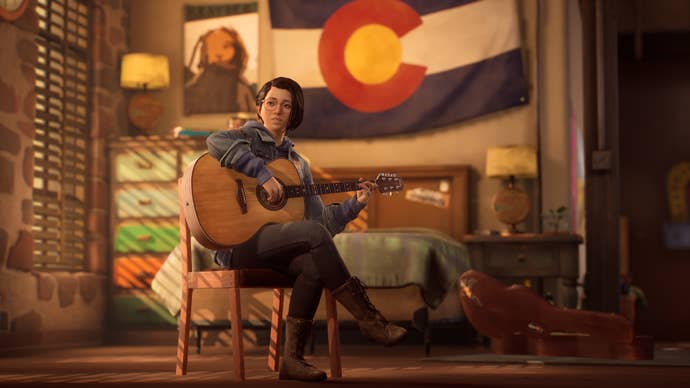Life is Strange: True Colors review - magic and mundane combine
More of the same but better?
Life is Strange first debuted in 2015, and since then, the series has carried a lot of things. Newly-made fans loved its attempts at a queer storyline; they hated its cringey, teen-clearly-written-by-out-of-touch-adult dialogue. But regardless, that first game set the tone for a series about (mostly) young people building connections with each other and trying to figure out a way into the future. Six years later, Life is Strange True Colors is more than just the next entry in this beloved series; it's a testament to how much this franchise has grown and matured from the initial template.
The first instance of that maturity we see is the most obvious. True Colors' protagonist, Alex Chen, is 21 during the events of the game, the oldest main character we've seen from these titles so far. Most of the other characters are around this age or older, and the focus is on the Town of Haven Springs as a whole, rather than events around the local high school, or the more nomadic route Life is Strange 2 takes. True Colors is very much about entering a community as an outsider, and contending with the nuances of that community, both good and bad, as you try to adjust.
The one doing that adjusting is Alex, as she leaves a group home to live with her brother Gabe in Haven Springs, on Colorado's Western Slope. It's implied that Alex has had a rough go of things up until now, and that she's contending with some kind of emotional issue. We don't fully understand what that is until Alex arrives in Haven, but it becomes clear that she doesn't want her brother to know about it. This is a fresh start for her, and Alex is desperate to not screw it up.

Gabe sets Alex up with basically everything she needs: a home, a job, even introducing her to his friends around town. Through Gabe's brief tour of the town, we get to see the life he's built for himself, and get more insight into both of their childhoods. True Colors excels in this regard, doing a significant amount of narrative work through brief interactions between its characters, and providing more information in the environment. That's a twofold feature. True Colors continues the Life is Strange trend of leaving items all around its world that players can interact with to gain extra context about people's lives, but the environments and sets also speak for themselves. Anyone who's been to a mountain town in Colorado knows Haven Springs' main street, from the one bougie dispensary in town to the mandatory Tibetan tourist shop.
Alex's powers end up being the other part of how the game conveys information about its world and characters. She's basically an X-Men level empath, capable of not only feeling what others feel, but also sort of absorbing those feelings and being able to see the world through the other person's eyes. When people are feeling something too strongly, however, Alex is in danger of becoming consumed by those feelings and losing control of herself. That's the game's initial tension, as Alex struggles to keep a grip on her emotions in front of Gabe. But that kind of falls to the wayside as the game's real plot, a death that shakes Haven Springs to its core, comes to the forefront.

It's strange, but how the main story plays out is both the strongest and weakest part of what True Colors has to offer. As a more grounded slice of life mystery, the game really shines, despite some overall pacing issues. But as a superpower story, it falls a bit flat for me. Unlike the first Life is Strange game's time manipulation, or 2's telekinesis, Alex's empathy abilities feel significantly less supernatural in this story, especially as the plot moves forward. While it's apparent that something beyond the pale is going on when Max can turn the clock back to save Chloe's life, Alex's powers often feel like an exaggerated take on what standard active listening and care look like.
Each chapter has someone whose emotional shoes Alex needs to step into. Doing this on a mechanical level entails scanning their emotions, taking them on, then looking around the room for objects with matching auras you can investigate. The objects reveal snippets of what the person in question is feeling, or what they associate with that item. Based on this info, you can decide how to "help" the person by choosing the right approach to dealing with their feelings in that moment. While it's true that you wouldn't be able to get such detailed information without the supernatural element of Alex's abilities, pretty much every situation the game presents is one where you could probably figure out what's bothering someone by reading the room and listening to what they're saying. That said, the descriptions Alex provides of the emotions she experiences from others are raw, and hit hard in a way I appreciate.

There are only two instances in the game where Alex's powers truly dig into the extraordinary, and for me, they're the weakest parts. Without getting into specifics, there are two characters that are experiencing such intense anger and fear, respectively, that the game offers you the option to try and take those emotions away from them. Doing this results in two very different outcomes for those people, and the game doesn't really give itself enough space to unpack the ramifications of that in any way. Meanwhile, if you choose to not take those options, the story is still able to progress, and at least one of those characters has to actually start coping with those feelings in some way before the story ends.
This is particularly frustrating because the emotional beats in True Colors don't need a gimmick to be special. Ryan's loyalty, and resulting anger; Steph's earnest care, these things shine through brilliantly just in their regular interactions with Alex and the other members of the community. There's a whole chapter devoted to Alex, Steph, and the rest of the town working together to create something special for a grieving child, and you don't need color-coded auras to understand that people are doing it out of care, that they're having fun, and that there are still some complicated feelings running underneath it all.

When True Colors leans into its more grounded elements and relationships is when it's at its strongest. It has just enough small town mystery to be suspenseful, while moving away from the schlockier aspects of its predecessors. The antagonists feel more like real people with real complications, rather than thriller villains that are later made to be sympathetic. This cast is by and large extremely likeable, and they all speak in much more modern and natural ways.
That said, True Colors does not completely escape the cringey tendencies of its forebears. This game delights in having the same indie/DIY music scene aesthetic that the original had, but every song that appears is definitely one you've heard, and could likely find on the set list of a Rock Band game. It's a bit difficult to reconcile the silly in-game indie band names we're shown with the Kings of Leon snippet that actually plays, but that's about the worst of it when it comes to the series' legacy of questionable cultural references.
Of the Life is Strange games I've completed (2 is still woefully unfinished for me atm), True Colors is my favorite. It strikes the perfect balance of focus on Alex as a person, the town of Haven Springs as a community, and how the two interact and change each other. While I'm still not sold on the superpowers as a mechanic or narrative device, they're unobtrusive enough to be fine, and do provide more to actually do besides walking around, looking at things and talking to people. If you liked previous entries in the Life is Strange series, you'll probably enjoy this one. It's a tighter, cleaner take on the formula, but at its heart, it's still the balance of magic and mundane that’s become signature to these games.
Disclaimers: Tested on PC. A copy was provided by the game's publisher.
Four Stars

